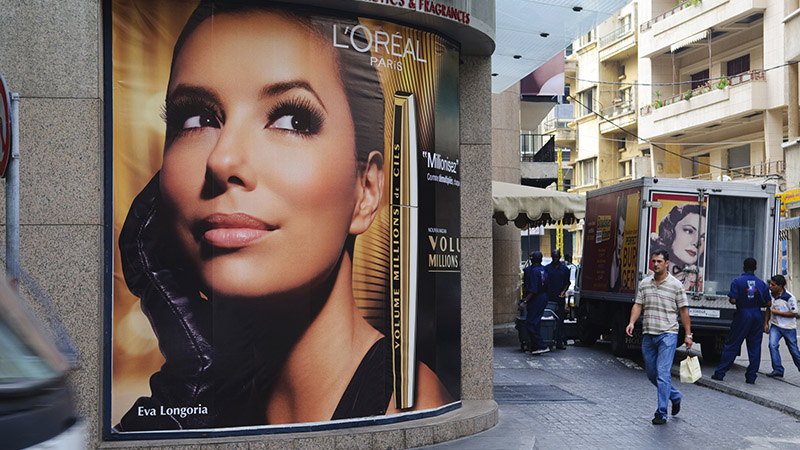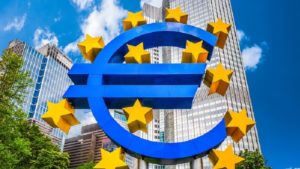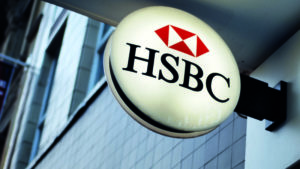L’Oréal diversity drive’s a beauty, says Nordea
French personal care and beauty giant L’Oréal is one of the best-performing companies held by the £364.6m Nordea 1 – Global Diversity Engagement fund, which co-manager Julie Bech believes is at the forefront of gender equity and inclusion.
The firm, which has been a holding in the fund since February 2019, is the world’s largest cosmetics company that offers a range of make-up and skincare labels to global consumers, including L’Oréal Paris, CeraVe and SkinCeuticals.
“L’Oréal is one example of a top-performing company in a global context,” Bech said. “It has a longstanding commitment to achieving gender equity at all levels and functions of the company. It has obtained gender balance within its board and upper management, as well as the mid-management level (between 40% and 60%) and above 30% at the executive level.
“It has a range of supporting policies and initiatives in place to secure continued performance, while it also advocates for gender equality externally through suppliers and business partners.”
Diversity initiatives play a key role in Bech’s stock selection process for the fund, which focuses on top-performing companies that are looking to improve their diversity practices through shareholder engagement, in terms of gender, ethnicity, socioeconomics and age.
The fund previously had a sole focus on gender diversity, but its remit was expanded in August last year due to a wider range of societal demands in relation to inclusion, as well as improving diversity data disclosure.
“We measure a company’s diversity profile by looking at the level of diversity at various organisational levels,” Bech explained. “Additionally, we view the company’s diversity levels relative to the diversity in the workforce. Also, recent changes in diversity levels are measured, while we also consider if the company has supporting DEI [diversity, equity, inclusion] policies, initiatives and targets in place. Finally, companies are assessed compared with industry and regional peers.”
Another company example in the portfolio that is “making positive strides” towards improving diversity, according to the manager, is multinational healthcare firm Merck. The US-headquartered business, which is led by female CEO Belén Garijo, is currently the portfolio’s seventh-largest holding out of 93 stocks, at 1.9%.
See also: Beneath the Bonnet: Findlay Park, Invesco and Sanford DeLand funds
“Women hold more than 38% of Merck’s leadership roles today, up 11 percentage points since 2015,” Bech continued. “Building on this momentum, the company has a stated aspiration to achieve gender parity in all leadership positions by 2030.
“To accelerate its efforts, Merck’s leaders – both women and men – take part in various development and mentoring programmes, as well as undertake numerous other diversity training initiatives. We have held a position in Merck since August 2019.”
According to data from FE Fundinfo, Nordea 1 – Global Diversity Engagement
has returned 70.2% in total return terms since its launch in February 2019, comfortably outperforming its FO Equity Ethical sector average by 14.2 percentage points.
Bech said: “Helping companies accelerate the adoption of positive DEI practices can unlock long-term value, as the market is increasingly likely to reward companies displaying sound ESG practices.
“Numerous academic papers have backed up the positive correlation between higher diversity on management boards and the high financial performance of companies.”
DEI policy silver lining for cloud-based mega cap
US cloud-based software giant Salesforce offers both strong growth prospects and a stellar approach to DEI, according to Mirova’s Soliane Varlet, who runs the €227m (£194.1m) Women Leaders and Diversity Equity fund.
Varlet, who has managed the Article 9-categorised fund since its launch in 2019, said Salesforce is not necessarily an “outside-the-box” stockpick for global equity fund managers, but pointed out that its commitment to gender parity is typically overlooked.
“What is interesting about Salesforce is that there is a female CFO, and a high percentage of women in the global workforce and in the executive committee,” she explained.
“There is a chief equality officer in charge of DEI policies, and DEI features heavily in the company’s roadmap. It also discloses its gender pay gap.
“In the UK, companies must disclose their gender pay gap, but this is not the case elsewhere. It is not something that is particularly easy for companies to do, nor are they often willing to do so.”
See also: CCLA’s head of investments: Why 2024 is best-suited to quality stocks
She added that Salesforce partners with universities in order to improve the diversity of its recruitment.
“It is also strong on parental leave – both for mothers and fathers,” Varlet said. “So, perhaps Salesforce is not an ‘outside-the-box’ name, but what it is doing is great. It is also number one in the CRM software space, above big names such as SAP and Microsoft. It has very strong growth and strong margins.”
The Women Leaders and Diversity Equity fund, indexed against MSCI World, invests in global equities that contribute to the achievement of the UN Sustainable Development Goals – in particular SDG 5: gender diversity and empowerment.
“We have a double objective – financial performance, and social and environmental impact,” Varlet explained. “We have extensive data to show the correlation between diversity and strong economic performance. And now, diversity data on companies is becoming easier to obtain.
“We have quantitative and qualitative criteria. The quantitative criteria is that we want companies with at least 30% women in their executive committees. This is not exactly equity, which is 50/50. But this is still almost double the 16% average for companies in the MSCI World index.
“We will also invest in companies with a female CEO, CFO or both at its helm. On average, 4-6% of MSCI World companies have female CEOs.
“Our last requirement is that we want companies with a good balance of women on their global workforce – with the gap between men and women falling below 15%.”
Elsewhere in the portfolio, the manager is particularly positive on US pharma giant Eli Lilly, which has a female CFO, an executive committee comprising more than 30% women and strong levels of diversity data.
“What is key in the pharma sector in terms of DEI is the focus on the diversity of clinical trials. In the US, for example, minorities account for 40% of the total population. But often fewer than 20% of trial participants are from different ethnic and cultural backgrounds. So, this is a key area where Eli Lilly can have a profound positive impact.
“Some methods have already been put in place to close this gap, through using decentralised clinical trial methods, and by converting recreational vehicles into mobile clinical research units. The company is also well known in the context of fighting against diabetes and obesity-related diseases, so it is very interesting to us.”
LVMH’s luxury empire rides out recession in style
As a slow trek towards recession remains on the mind of investors, one area of business seems to have flourished. As wallets become lighter, luxury retailer LVMH has continued to embellish them with Louis Vuitton logos.
Katerina Kosmopoulou, deputy manager of the J Stern & Co World Stars Global Equity fund, noted that the luxury goods market holds a few immunities to the difficulties other sectors face as belts tighten, in areas such as competitive pricing and new market players. LVMH, which holds legacy brands including Louis Vuitton, Givenchy, Marc Jacobs, Tiffany & Co and Tag Heuer, is a main player in this industry.
“It’s very rare to launch a successful new luxury brand, because they rely on craftsmanship and heritage. There’s an inherent value that comes from having the history of 100 years that differentiates these brands from others,” Kosmopoulou said.
“It’s a completely different experience than going into a mass market store. You have people waiting on you, the products displayed in a specific way and sales service. On top of that,there is significant advertising that goes into maintaining those barriers to entry, which allows them to have the pricing power. There’s a reason why some brands will just never have the products on sale. It doesn’t happen because they are protecting the brand.”
When this sales model is successful, it provides high degrees of protection for the brand. However, while LVMH has found success in this model, even well-established designer brands have struggled as they are forced to explore new markets.
Burberry, founded in 1856 and home to iconic fashion such as its trench coat and checked pattern, saw its share price tumble 46.9% in the past year. In January, chief executive Jonathan Akeroyd raised awareness of a purchasing slowdown in the quarter to December, typically a peak season, and the company warned of an annual drop in revenue and profit.
In this same period, despite caution in similar market conditions, LVMH’s share price rose 6.8%. Kosmopoulou said having flexibility in product as well as diverse geographic appeal is a differentiator as the market tightens.
“Over the past few years, with one or two exceptions, the large, diversified players have been very successful, and some of the model brands, players like Burberry, have suffered. You’ve had volatility around Covid and supply chains, and you need to invest heavily behind those brands to build globally,” Kosmopoulou said.
For LVMH, Asia now represents 38% of its overall revenue by region of delivery, and almost half of its fashion and leather goods sector. The US, which represents 25% of this revenue, has shrunk two percentage points since 2022.
Kosmopoulou added: “If you want to capture, say, the Chinese market, you have to go out there and spend significantly in terms of presence and stores. That’s not easy to do for a smaller player, and that inevitably has meant that for larger players, it becomes a virtuous cycle. They have the money they can spend on stores, they can spend on advertising, they can spend it on creative design and talent, and that builds over time.”
This article first appeared in the March issue of Portfolio Adviser magazine







